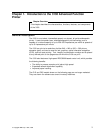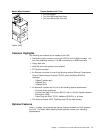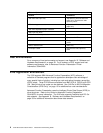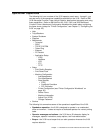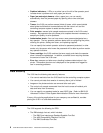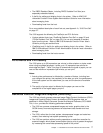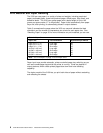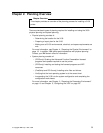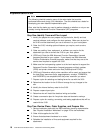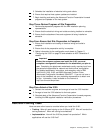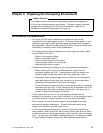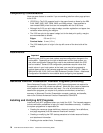
The DBCS Resident Raster, including DBCS Scalable Font Sets (as a
separately-orderable feature)
A facility for adding and deleting fonts in the printer. Refer to
IBM 3130
Advanced Function Printer System Administration Guide
for more information
about managing fonts.
Downloading fonts from the host.
For a more detailed description of each font set, see Appendix A, “3130 Font Set”
on page 37.
The 3130 supports the following for PostScript and PCL-5e fonts:
Various resident fonts (see “PostScript Resident Font Set” on page 52 and
“PCL5e Resident Font Set” on page 55) You can print samples of resident
fonts from the printer. Refer to
IBM 3130 Advanced Function Printer User's
Guide
for printing out resident fonts
(PostScript only) A facility for adding and deleting fonts in the printer. Refer to
IBM 3130 Advanced Function Printer Administration Guide
for more information
about managing fonts.
Downloading fonts from the host or server.
Performance and Print Quality
The 3130 prints up to 30 impressions per minute in either simplex or duplex mode
when using long-edge fed paper; it prints up to 15 impressions per minute for
short-edge fed paper. Table 2 on page 8 summarizes the types of paper you can
use and the maximum impressions per minute you can print.
Notes:
1. Actual printer performance is affected by a number of factors, including how
you configure the printer, the complexity of the data you print, the performance
of the host-system and the attachment you use, and the amount of available
memory.
2. The quality of printer output is affected by the paper you use and the
composition of the logical pages you print.
Advanced Function Image and Graphics (IPDS Only)
The 3130 can directly process advanced Image Object Content Architecture (IOCA)
images and Graphics Object Content Architecture (GOCA) graphics data, as
described in
Mixed Object Document Content Architecture Reference
, SC31-6802.
This, in turn, provides the following performance benefits:
The 3130 can process compressed images and vector graphics data in the
GOCA format, thus reducing demand on attachment data transfer and host
storage.
The 3130, rather than the host system, decompresses images and rasterizes
vectors, thus reducing host system processing cycles.
The 3130 can perform arbitrary scaling operations or resolution correction for
scanned images, which allows some complex jobs to print at greater throughput
by increasing the overall data-processing speed of the printer.
Chapter 1. Introduction to the 3130 Advanced Function Printer 7





